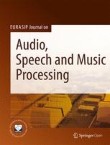Multi-source localization by using offset residual weight
Multiple sound source localization is a hot issue of concern in recent years. The Single Source Zone (SSZ) based localization methods achieve good performance due to the detection and utilization of the Time-F...
